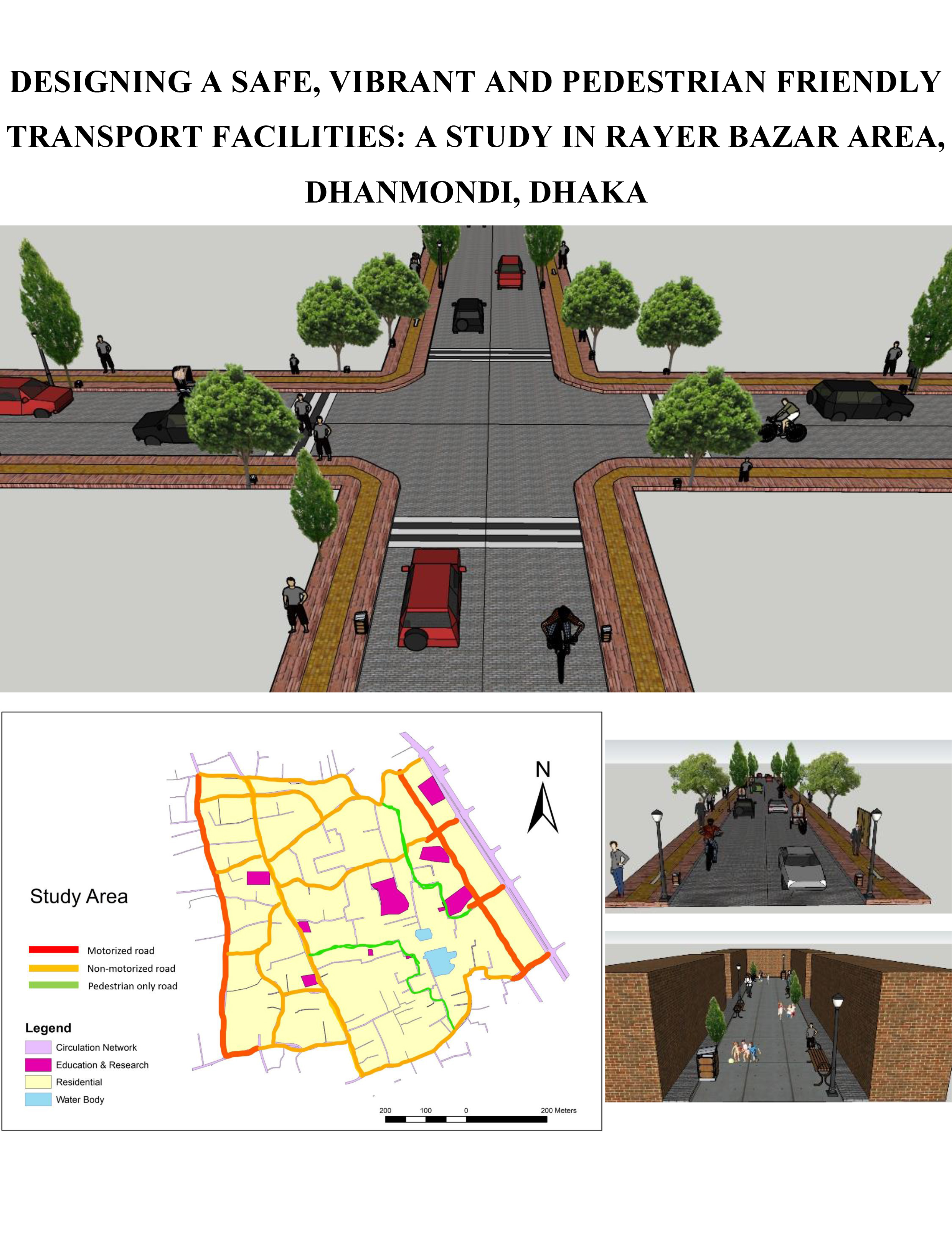
Walkable neighborhoods have the ability to encourage more social interaction and greater community involvement, which in turn leads to greater social capital within the community. Social capital has been defined as “the social networks and interactions that inspire trust and reciprocity among citizens” (Leyden 2003). Walking for transport decreases the number of trips a person makes by car. This has the potential to reduce greenhouse gas emissions and therefore to increase air quality (Ewing et al. 2011). Being the capital of Bangladesh, Dhaka has now been considered as the commercial hub of the country as well as the cultural, political Centre. Over the last 10 years, the population of Dhaka has more than doubled. But this growth has been occurred with limited space and resource; so the congestion has been increasing in an uncontrolled way harming the environment and public health as well.
Developing infrastructure and unplanned transport facilities made on limited resources now creates haphazard and unsafe environment. In order to increase urban mobility to face the challenges now Dhaka faces inequality, unhealthy urban environment and unsafe streets for the pedestrians as well. To remove the growing traffic problems, the authorities have been taking various initiatives like Mass Rapid Transit project, Bus Rapid Transit project, constructing flyovers etc. These projects also focus on the needs of the pedestrians. The purpose of transportation is to transfer people and products from one place to another instead of increasing vehicles on the roads.
To maintain public health and environment both, it is now necessary to increase walkability and decrease automobile services as well. Walkability encourages citizens and visitors participate on walking. As walkability does not harm the physical environment, it is free, requires little amenities and no fuel is used as a result, it maintains the environment with the betterment of 2 | P a g e public health as well. The form of walkability addresses cycling, rickshaws and other sustainable modes of accessible transportation networks (Debra, 2011). Walkability for pedestrians is necessary as it develops the health of citizens and removes the chronic effect of inactive physical activities due to lack of opportunities. It addresses pedestrian’s safety issues as pedestrians are the main victims of congested and busy traffic roads.
Even for increasing learning capacity for children like “School going group” the noise pollution is a great obstacle. As to reduce this major issue and reducing the congestion for their smooth movement on road, it is necessary to encourage walking more instead of using heavy vehicles which requires more space than rickshaws or bicycles. Consequently, the space for people-friendly venues like parks, playgrounds, public spaces etc. are reducing day by day. While the roads are becoming narrower day by day for uprising buildings, garages and commercial uses, the tendency of public gathering is also reducing simultaneously. The connection among people has been loosening and livability becomes scarce. To ensure safety, public health, environmental vibrancy and overall pedestrian accessibility needs a user-friendly street with consideration of footpath width, street furniture, vendor facilities, road characteristics, circulation patterns, open spaces, drainage etc (Debra, 2011). Download report

